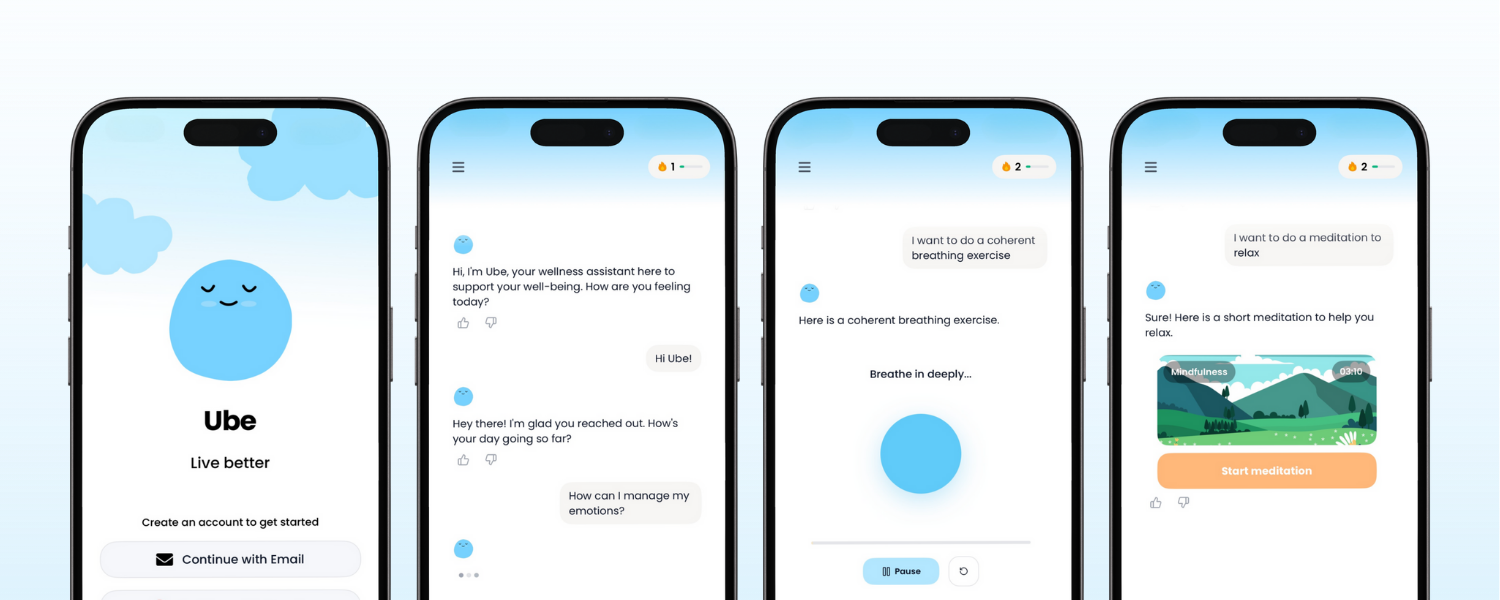Why an AI mental chatbot companion matters right now?
Most of us already talk to our phones dozens of times a day, yet when stress spikes or motivation dips, we still wait for the perfect moment to reach out. An AI mental chatbot companion fills that awkward gap between need and action, offering immediate, stigma-free support when life feels heavy or tangled. This article explains how these companions work, where they help most, and the boundaries you should keep in mind. You will learn practical ways to use an AI companion for daily mood check-ins, thought reframing, and building habits that stick. We will also look at the privacy and ethics landscape, the research behind digital tools for mental wellness, what great conversations with an AI actually look like, and where a human professional is essential. If you are curious about getting real value in minutes, not weeks, you are in the right place.

What an AI mental chatbot companion can and cannot do?
An AI companion can help you pause, name what you feel, and choose the next small step. It excels at structured reflection, like guiding a five-minute mood debrief at lunch or suggesting micro-actions for sleep, anxiety, or rumination. It can simulate techniques from cognitive behavioral therapy, acceptance and commitment strategies, and mindfulness prompts in a supportive, conversational format. You can ask for a grounding exercise, a thought-challenge framework, or a custom routine that fits your schedule. Still, an AI is not a clinician, and it does not diagnose or replace therapy. When symptoms escalate, or if there is risk of harm, a human professional is the right path. The best use of an AI companion is as a skill-building partner, bridging moments between therapy sessions or offering care to those not yet ready for formal treatment.
The science, briefly: what we know so far
There is growing evidence that digital mental health tools can improve engagement and outcomes, especially when designed for clarity and ease of use. Meta-analyses of guided digital CBT show promising effects for anxiety and depression, particularly when users receive regular nudges and structured exercises. While research specific to general-purpose chatbots is still emerging, it builds on a well-established foundation of internet-delivered therapies. For context, the World Health Organization’s stepped care approach emphasizes accessible, lower-intensity supports early, before symptoms escalate, which is where AI companions fit well. For ethical practice and safety, leading voices recommend transparency, crisis routing, and data minimization. You can review broader digital mental health principles in the WHO’s guidance on mental health and digital interventions, as well as the American Psychological Association’s technology ethics discussions, such as the APA’s resources on telepsychology and digital tools APA technology resources and the WHO’s digital health insights WHO digital health. These sources are not endorsements of any single tool, but they set a helpful frame.
Practical ways to use an AI companion in daily life
The best outcomes come from consistent, small interactions. Start with a simple daily check-in: name your top feeling, your energy level, and one stressor. Ask your AI to surface a pattern at the end of the week, like sleep mood correlations or the situations that trigger worry spikes. Next, layer skills. If you spiral into what-ifs, request a guided cognitive reframe: identify the thought, rate belief strength, generate a balanced alternative, then re-rate. If you are restless at night, ask for a two-minute body scan or a breath cadence plan, and save it as a reusable routine. If motivation is thin, try a two-minute rule: choose one micro-task and schedule a follow-up message to celebrate completion. Over time, you build a library of personalized practices. The win here is not perfection, it is short course corrections that keep you moving.
How the chat actually feels when it is working?
Good conversations with an AI companion feel collaborative, not prescriptive. You might say, “I am anxious about tomorrow’s meeting, stomach tight, imagining failure.” The AI mirrors your language, validates your stress, then offers a choice of next steps: a 90-second grounding, a thought-challenge, or a rehearsal script. It asks concise questions, tracks your answers, and reflects progress. You will notice clean, human-sounding prompts and a bias toward brevity, so you can do something rather than read a wall of text. When you veer off, the companion gently summarizes and offers a fork, like skill practice or values alignment. The aim is to increase your psychological flexibility, not to produce a perfect mood score. The best sign it is working is simple: you leave chats with one actionable next step and enough calm to begin.
Privacy, data, and consent: guardrails to insist on
Mental health data deserves special care, and your trust should be earned. Before you use any AI mental chatbot companion, check whether the app clearly states what it collects, how it stores data, and who can access it. Look for data minimization, end-to-end or strong encryption at rest and in transit, and the ability to delete your history. Transparent consent flows and plain-English explanations matter more than glossy features. If an app shares data with third parties, it should specify the purpose and allow you to opt out. Regulators continue to evolve their frameworks for AI and health data, so reputable products proactively align with best practices and independent audits. Mozilla’s annual Privacy Not Included project has chronicled risky design patterns across apps Mozilla Privacy Not Included, reminding users to be choosy. When in doubt, keep your messages specific enough to be useful, but omit details you would not share elsewhere.
Ethics and safety features that earn trust
Responsible AI companions elevate safety without making you feel policed. You should see clear crisis handling: if you mention self-harm or imminent danger, the system should offer resources, encourage contacting supports, and route you toward local help. It should avoid medical claims and present itself as a supportive tool, not a replacement for licensed care. Bias mitigation matters too. The AI should avoid moralizing, respect cultural context, and welcome corrections. Ideally, the app discloses its training approach and supervision practices for safety tuning. Periodic prompts that invite you to set boundaries around topics or data sharing increase your sense of control. Above all, an ethical product acknowledges uncertainty, explains limitations, and guides you toward human clinicians when needed.
Building a routine you will actually keep
Habits stick when they are easy, anchored to existing cues, and reinforced by small wins. Pair your AI companion check-ins with daily anchors like morning coffee or the end of your commute. Keep sessions short at first, under five minutes. Ask the AI to auto-suggest a micro-plan each weekday, and a review on Sundays. If you struggle to start, tell the AI to ask only two questions: what mattered today, and what felt heavy. That minimal friction keeps you returning. Use streaks sparingly if they motivate you, but do not obsess over them. Perhaps most powerful is collaborative goal setting: name one value you want more of next week, like kindness or courage, and let the AI reflect moments when you lived it. Values language turns the tool into a compass, not a scoreboard.
When to choose human support instead?
AI is a bridge, not a finish line. Choose a human therapist or urgent help if you notice persistent low mood for weeks, escalating anxiety that disrupts work or relationships, increased substance use, or any thoughts of self-harm. If you have a complex history of trauma or a current crisis, a licensed clinician can offer depth, continuity, and care planning that software cannot. The healthiest mindset treats an AI mental chatbot companion as a first assistant: it helps you track, practice, and remember, while clinicians provide diagnosis, treatment, and nuanced guidance. If you are in immediate danger, contact local emergency services or a suicide prevention hotline in your region. You deserve help that meets the moment.
How Ube aims to help, simply?
Ube is built for short, focused conversations that respect your time. You can ask for a two-minute grounding, rehearse a tough conversation, or run a quick cognitive reframe. Ube remembers what helps, surfaces patterns, and keeps your data preferences front and center. It is designed for clarity over jargon, with a tone that feels steady and warm. You remain in control of your pace and your privacy. You can export or delete your data, and you can choose the depth of reflection you want on any day. If you use therapy, bring Ube’s summaries to sessions. If you are just starting, let Ube be your gentle companion that nudges you toward kinder routines.
Getting started today
Pick one simple intention for the next 24 hours, something specific and kind. Tell your AI companion, then ask it to craft a tiny plan that takes less than five minutes. Try it, then check back in to reflect on what changed. Repeat tomorrow. Over a week, these micro-adjustments create momentum. Mental health is not a straight line. It is a practice of returning, noticing, and choosing again. If you are ready, Ube can meet you right where you are and walk alongside you.
Conclusion
An AI mental chatbot companion is not a cure-all, but it can be a powerful ally for awareness, skill practice, and day-to-day steadiness. The most reliable results come from short, consistent check-ins, plus honest boundaries around the tool’s limits. Choose products that are clear about privacy, safety, and ethics, and remember that human clinicians are there for deeper or urgent needs. If you want a practical starting point, open a conversation and ask for one small step you can do in two minutes. If that step helps, do another tomorrow. With Ube, you get kind structure, a little accountability, and a companion that learns what supports you best. When you are ready, say hello and let’s begin with one gentle breath.
